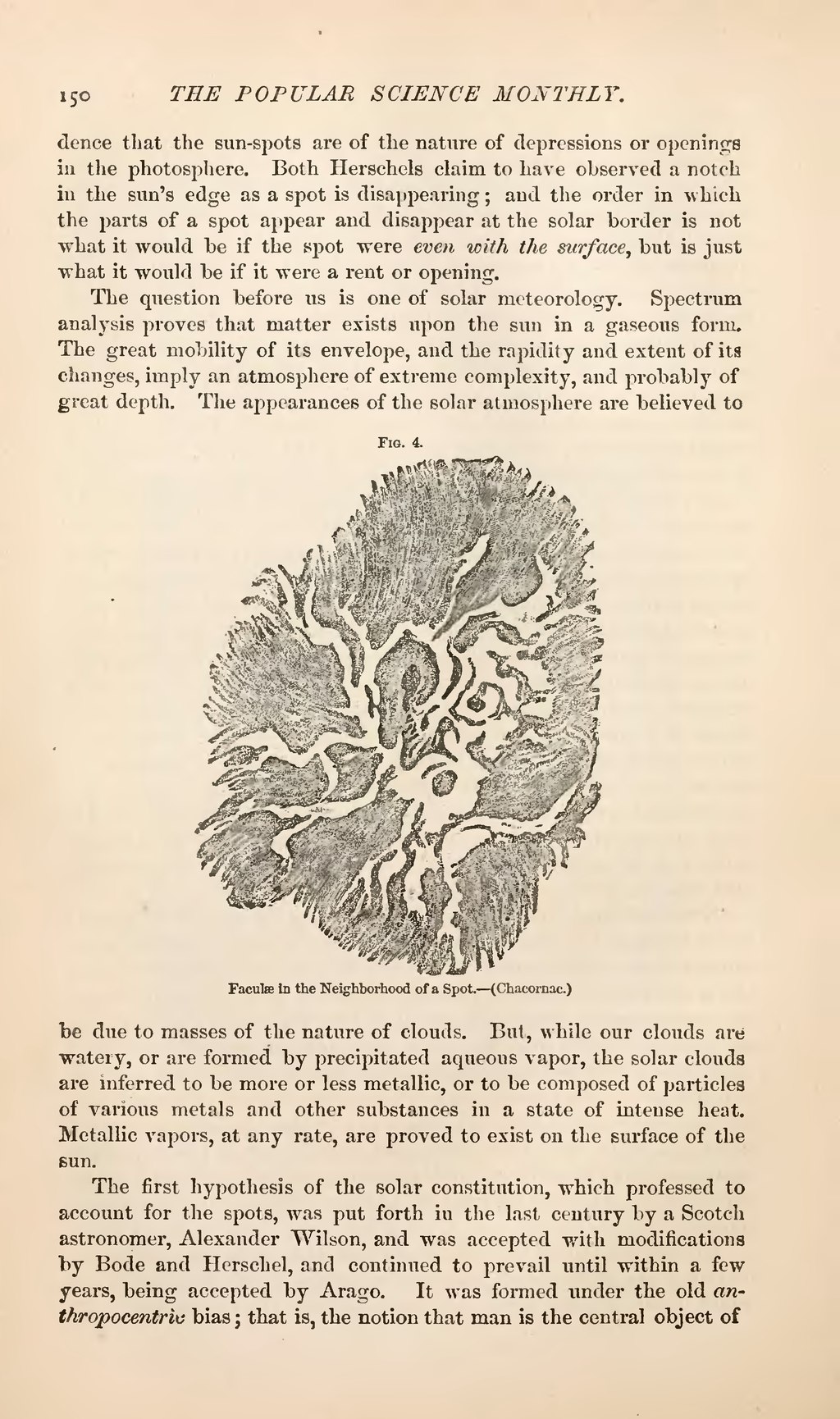dence that the sun-spots are of the nature of depressions or openings in the photosphere. Both Herschels claim to have observed a notch in the sun's edge as a spot is disappearing; and the order in which the parts of a spot appear and disappear at the solar border is not what it would be if the spot were even with the surface, but is just what it would be if it were a rent or opening.
The question before its is one of solar meteorology. Spectrum analysis proves that matter exists upon the sun in a gaseous form. The great mobility of its envelope, and the rapidity and extent of its changes, imply an atmosphere of extreme complexity, and probably of great depth. The appearances of the solar atmosphere are believed to
Fig. 4.
Faculæ in the Neighborhood of a Spot.—(Chacornac.)
be due to masses of the nature of clouds. But, while our clouds are watery, or are formed by precipitated aqueous vapor, the solar clouds are inferred to be more or less metallic, or to be composed of particles of various metals and other substances in a state of intense heat. Metallic vapors, at any rate, are proved to exist on the surface of the sun.
The first hypothesis of the solar constitution, which professed to account for the spots, was put forth in the last century by a Scotch astronomer, Alexander Wilson, and was accepted with modifications by Bode and Herschel, and continued to prevail until within a few years, being accepted by Arago. It was formed under the old anthropocentric bias; that is, the notion that man is the central object of

